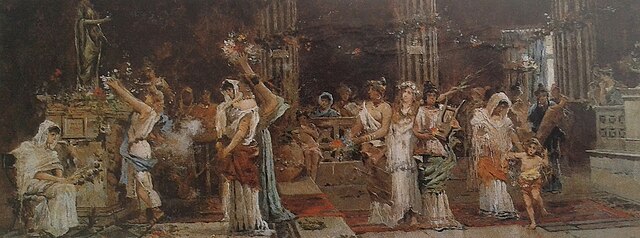In the British Isles and parts of the Commonwealth, the May Queen or Queen of May is a personification of the May Day holiday of 1 May, and of springtime and the coming growing season. The May Queen is a girl who rides or walks at the front of a parade for May Day celebrations. She wears a white gown to symbolise purity and usually a tiara or crown. Her duty is to begin the May Day celebrations. She is generally crowned by flowers and makes a speech before the dancing begins. Certain age-groups dance around a Maypole celebrating youth and springtime.
A May Queen of New Westminster, British Columbia, Canada circa 1877
The 2005 May Queen of Brentham, England on her throne
May Day is a European festival of ancient origins marking the beginning of summer, usually celebrated on 1 May, around halfway between the Northern Hemisphere's Spring equinox and June solstice. Festivities may also be held the night before, known as May Eve. Traditions often include gathering wildflowers and green branches, weaving floral garlands, crowning a May Queen, and setting up a Maypole, May Tree or May Bush, around which people dance and sing. Bonfires are also a major part of the festival in some regions. Regional varieties and related traditions include Walpurgis Night in central and northern Europe, the Gaelic festival Beltane, the Welsh festival Calan Mai, and May devotions to the Blessed Virgin Mary. It has also been associated with the ancient Roman festival Floralia.
Maypole dancing at Bishopstone Church, East Sussex, in England, UK in 2006
Floralia by Antonio María Reyna Manescau (1888).
Maypole dancing in the Netherlands, by Pieter Brueghel the Younger (16th century).
Maibaum in Munich, Germany






